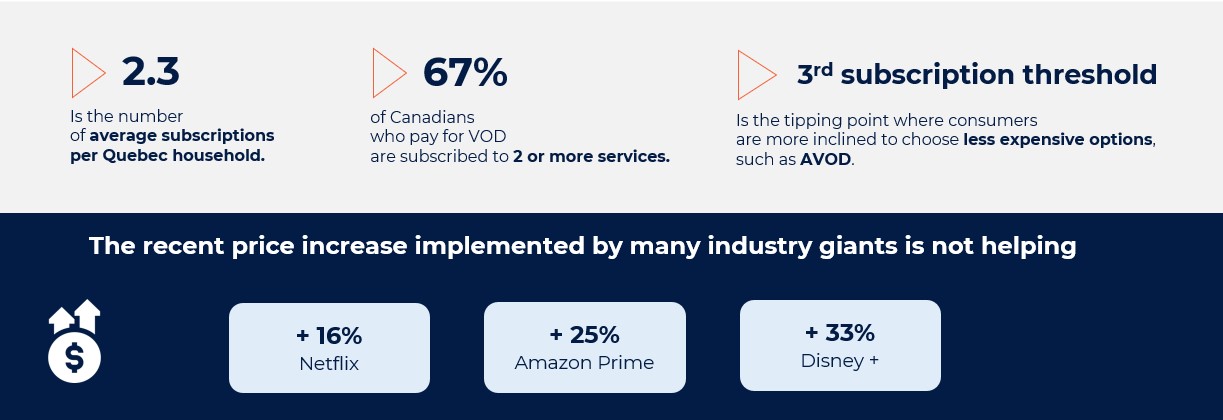MEDIA TRENDS
Things are changing for Subscription Video on Demand (SVOD) specialists in 2022. A dozen or so years after the initial launch of such platforms, the honeymoon with consumers seems to be coming to an end. And while the number of SVOD offers continues to grow, the platforms are struggling to maintain profitability.
The SVOD business model has reached its limit
The magic of subscription is gone
Faced with the rising cost of living, the majority of Quebecers plan on cutting back on expenses. And non-essential products and services—many entertainment related—will be the first to go.
And while consumers continue to tighten their purse strings, we’re willing to bet that many households will start limiting their content-based subscriptions. In fact, the cost of such subscriptions—considered too high by many—is cited as being one of the reasons 53% of Canadians are looking to cancel.
Consumers are starting to get tired of subscription costs
Hybrid models are becoming a must
In a market that’s ultra saturated and competitive, advertising remains an obvious choice when it comes to ensuring revenue growth. And industry giants know this: Netflix plans on launching an ad-supported tier within the next 2 years, with Disney following suit with a similar service.
AVOD services experiencing a significant growth
Consumers want more content
Too many services, not enough content! The growing gap is leading to much frustration on the part of consumers. Paradoxically, they always want more in terms of new content:
- 41% of major SVOD users in Canada claim there’s not enough content at their disposal;
- 47% of consumers who unsubscribe from paying platforms do so because of a lack of content.







